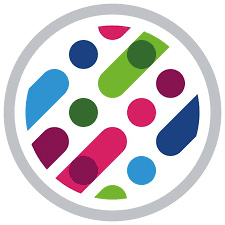
bioRxiv and medRxiv platforms

The pre-publication platforms bioRxiv and medRxiv are now managed by the new not-for-profit organization openRxiv, with financial support from the Chan Zuckerberg Initiative to ensure their independence and sustainability. For more information
What's the Impact Factor?
The prestige of a journal is linked to its editorial policy of pre-selecting manuscripts according to criteria of novelty and scientific impact, followed by a critical evaluation by peers, experts in the same field, before publication. The more a journal's articles are cited, the higher its impact factor (IF), which is the average number of citations of its articles by other journals and authors relative to the total number of articles published. By default, it is calculated over a two-year publication period. The IF is based on the Web of Science Core Collection (WoS), a bibliographic database owned by Thomson Reuters. WoS indexes more than 12,000 scholarly journals covering all disciplines, including the humanities, social sciences, and the arts. Of these, 11,459 have an impact factor and are cited in Clarivate Analytics' Journal Citation Reports (JCR).
IF therefore depends on the editorial policy of a journal in selecting the quality of manuscripts submitted to it. This selection is based on criteria of novelty and scientific impact, as well as verification of the rigor of experimental design, data processing, and presentation of results. For example, Nature and Science, two prestigious multidisciplinary scientific journals, have IFs of about 50 and 45, respectively, and acceptance rates of about 6%. Some more specialized journals can reach or exceed an IF of 95 (The Lancet).
I've submitted my manuscript, what's next?
The journal follows two main steps in evaluating a submitted manuscript. The first step is to determine whether the study fits within the journal's editorial policy. The manuscript is then either accepted for peer review or rejected immediately. In the case of rejection, the authors resubmit their manuscript to a new publisher after adapting it to the required format.
During peer review, the manuscript undergoes one or more cycles of evaluation, each time with requests for changes ranging from simple corrections to the performance of new experiments to confirm results or hypotheses. At the end of the process, if the authors have satisfied all the reviewers' requests, the article is accepted; if not, it is definitively rejected.
How much does it cost?
The peer review process is mainly done on a voluntary basis by other expert researchers. However, authors are required to pay article processing charges (APC) to the publisher, which can be very high, ranging from €800 to over €9,500, in addition to the experimental costs. These APC fees have increased significantly, reaching €30 million in 2020, an increase of 48% since 2018. If we add the cost of subscriptions to the same journals, we reach the astronomical sum of 117.6 million euros in 2020 for France alone. Throughout the entire process, nothing is revealed: confidentiality is the rule between reviewers, authors and publishers. This lack of transparency in peer review, with an increasing number of articles being retracted for reasons of scientific integrity or even fraud, is drawing strong criticism from the scientific community.
Publication and peer review at eLife: a more transparent approach inspired by Peer Community In (PCI)
In 2023, eLife redefined its scientific publication model by requiring open submission of preprints to bioRxiv or medRxiv. Submitted preprints are then selected by specialized scientific editors on the basis of impact and novelty, and offered for peer review while avoiding conflicts of interest. Authors must pay an APC of €2,500 before the peer review process begins, unlike most publishers who charge this fee at the end of the process.
The rigor and transparency of the peer review process are guaranteed at every stage, thanks to the recording and visibility of exchanges up to the end of the process, which can take place even if not all the reviewers' requests having been satisfied. At the end of this phase, the final version of record (VOR), which corresponds to the corrected pre-publication, the evaluation report (including the reviewers' comments and criticisms), the authors' responses, and the publisher's comments on the quality of the article and the progress of the evaluation process, is produced. In a sense, pre-publications are evaluated, annotated, and categorized in the same way as graded papers in a school context, and are thus ready for publication as is.
eLife's new approach represents a significant change in their impact factor, which they have long refused to support, and marks a break with traditional evaluation methods.
Effect on the impact factor
The adoption of this model has resulted in the disappearance of eLife's original IF as defined. However, it should be noted that eLife has never wanted to have an impact factor and has long been committed to the DORA Declaration (global initiative to transform the evaluation of scientific research), of which it was one of the first signatories. eLife's strategy is therefore a real gamble when it comes to publishing and open science. From now on, eLife's FI will only be calculated on the basis of articles that have been "positively evaluated" by Clarivate and other publishers.
It remains to be seen whether researchers will stick with and overcome the loss of eLife's FI and its model of paying for review prior to preprint evaluation. It may well be that some authors will turn away from this system, especially in China, where IF is still very important.
Educational aspect: the power of example
eLife's editorial model also serves as an educational tool by transparently displaying the diverse and constructive criticism and responses formulated during the peer review process. By publishing all articles submitted for review, eLife enables the scientific community to see how their work is perceived and evaluated, providing a valuable opportunity to understand the standards of high quality research. This process fosters a culture of open criticism that, if widespread, could change the way research is communicated and evaluated worldwide.
Comparison with PCI and Short Notes
Peer Community In (PCI) also emphasizes transparent peer review, but differs from the eLife or classic model in that it does not publish articles or assign DOIs to them. It offers rigorous pre-publication reviews that remain on dedicated servers. This system facilitates the improvement of manuscripts before formal publication, in line with the ethic of transparency and community-driven evaluation, without the pressure of immediate publication.
Short Notes, on the other hand, specializes in disseminating results often neglected by traditional journals, researchers, or even eLife and PCI, such as successful or unsuccessful replicates, original results, and "negative results". No new experiments are required, which is also a notable difference - as is the fact that it's free. For accepted Short Notes, the review process is transparent. However, unlike eLife, Short Notes does not provide access to rejected manuscripts. This approach of free dissemination of unpublished, peer-reviewed results with DOIs plays a significant role in broadening the scope of published scientific knowledge by incorporating elements crucial to a more comprehensive view of research - something no other editorial model currently offers.
eLife's innovative approach, complemented by initiatives such as PCI or the Short Notes platform, could redefine research evaluation by focusing on quality and content rather than the prestige of the publication channel. eLife seeks to challenge the standards and publisher dictates that have traditionally dominated scientific evaluation. The loss of eLife's Impact Factor reflects the challenges these editorial innovations pose to traditional citation-based metrics. By integrating models such as PCI and Short Notes, which focus on specific aspects of scientific communication and transparency, eLife is enriching the global landscape of academic publishing and challenging established conventions in the field of scientific publishing. Let's hope that scientists will embrace this editorial revolution and that eLife's gamble will pay off in the long run.
